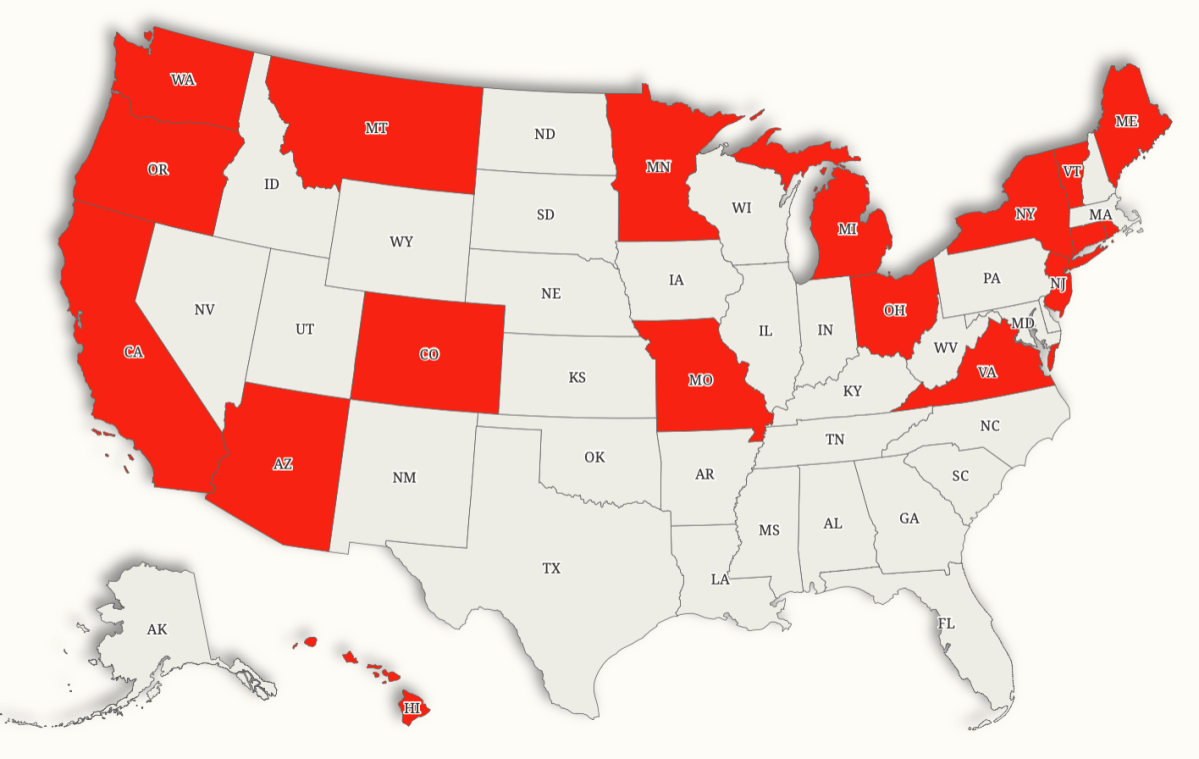Minimum Wage Increases by State Map


Marcus Rodriguez
Historical Geography Expert
Marcus Rodriguez specializes in historical cartography and geographic data analysis. With a background in both history and geography, he brings unique...
Geographic Analysis
What This Map Shows
This map illustrates the states in the U.S. that are scheduled to raise their minimum wage in 2026. It provides a clear visual representation of how different regions are addressing wage standards, reflecting the ongoing conversation about fair pay and economic conditions across the country. The map includes specific figures for each state, showing both the current and new minimum wage rates.
Deep Dive into Minimum Wage Trends
Minimum wage is a critical factor in the economic landscape of any country, affecting millions of workers and their families. With the increasing cost of living, many states have recognized the need to adjust their minimum wage to ensure that workers can afford basic necessities. As of 2026, several states are poised to implement increases in their minimum wage rates, signaling a shift towards more progressive labor policies.
For instance, California is set to raise its minimum wage from $16.50 to $16.90. This incremental increase reflects California's high cost of living, particularly in major cities like San Francisco and Los Angeles, where housing prices have skyrocketed. Interestingly, California has been a leader in the movement towards higher minimum wages, often serving as a model for other states.
Meanwhile, states like New York are also making notable strides. The Empire State's minimum wage will increase from $15.50 to $16.50, which is significant in a state where many residents struggle with the high costs of living. Such changes aren't isolated; they indicate a broader trend of states taking the initiative to address income inequality and support low-income workers.
On the other hand, states like Missouri are making a substantial leap from $13.75 to $15.00, showcasing a shift in economic policy aimed at uplifting the working class. This move reflects growing recognition of the importance of living wages. Interestingly, Missouri's increase is part of a series of planned raises that will align its minimum wage more closely with the national conversation on fair compensation.
Furthermore, states like Hawaii are set for a dramatic increase from $14.00 to $16.00, which is particularly noteworthy given the high costs associated with living on the islands. Hawaii’s unique economic challenges, including reliance on tourism and high imported goods prices, necessitate a higher minimum wage to support its workforce.
In contrast, states like Montana, with a more modest increase from $10.55 to $10.85, highlight the disparities in economic pressures across the U.S. Factors such as local economies, employment rates, and cost of living variations influence these decisions significantly.
Regional Analysis
When analyzing the map regionally, we see distinct patterns in minimum wage increases across the United States. For example, the West Coast states, including California, Oregon, and Washington, tend to have higher minimum wages compared to other regions. Washington, for example, is set to raise its minimum wage from $16.66 to $17.13, maintaining its status as one of the states with the highest minimum wage in the country.
The Northeast also shows a trend of higher minimum wages, with states like New York and Connecticut leading the charge. New Jersey, raising its minimum wage from $14.53 to $15.23, reflects a competitive landscape among neighboring states to attract and retain workers.
In contrast, the Midwest and South appear to have more conservative increases, as seen in Michigan's rise from $12.48 to $13.73 and Virginia's from $12.41 to $12.77. This disparity raises questions about regional economic policies and the influence of local economies on wage standards.
Interestingly, states like Oregon, which have not yet finalized their 2026 minimum wage rate, indicate that discussions around wage increases are ongoing and dynamic, influenced by local economic conditions and political climates.
Significance and Impact
The significance of these minimum wage increases cannot be overstated. They play a crucial role in shaping economic stability for low-income workers and their families. By raising the minimum wage, states are not only providing immediate financial relief but also contributing to a larger movement toward economic equity.
Furthermore, these changes can positively impact local economies. Higher wages often lead to increased consumer spending, which can stimulate growth in various sectors. However, the debate surrounding minimum wage adjustments also includes concerns about potential job losses or increased costs for businesses, particularly small enterprises.
Looking ahead, the trend of raising minimum wage is likely to continue, especially as more states recognize the importance of addressing income inequality. As inflation and living costs increase, the push for a living wage will remain a significant topic in economic discussions. With ongoing advocacy and public sentiment shifting in favor of fair pay, it will be interesting to see how these changes evolve in the coming years.
Visualization Details
- Published
- October 10, 2025
- Views
- 324
Comments
Loading comments...